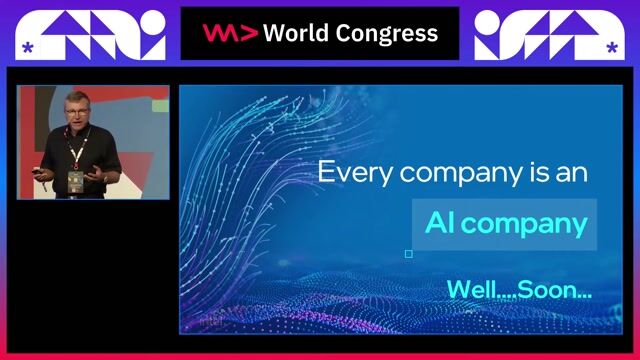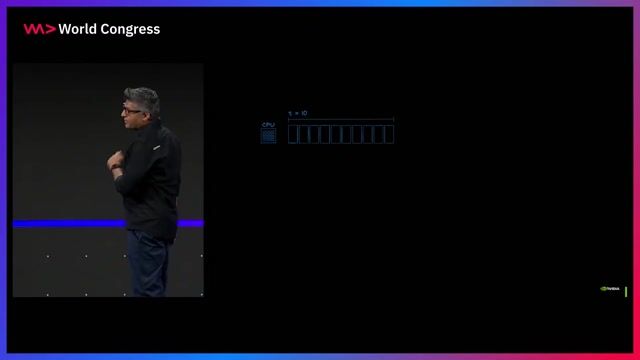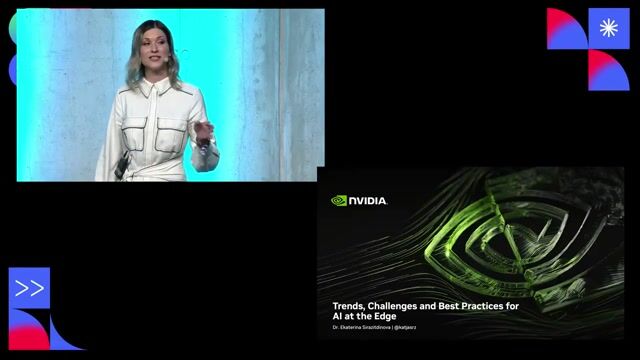Thomas Schmidt
AI Factories at Scale
#1about 2 minutes
The history and origins of the AI company Amber
Amber's journey began in 2006 as Fluid Dyna, an early Nvidia partner for GPU-accelerated code, before being acquired by Altair and later re-established as an independent AI infrastructure company.
#2about 3 minutes
Key milestones in the evolution of AI and GPU computing
The release of CUDA, AlexNet, and Transformers led to an exponential increase in compute demand, culminating in the public adoption of AI with ChatGPT.
#3about 2 minutes
Understanding the business impact and adoption of generative AI
Generative AI presents a massive business opportunity with a high return on investment, driving rapid adoption across major enterprises.
#4about 1 minute
Comparing supercomputer hardware from the past decade
A modern Nvidia DGX H100 system vastly outperforms a state-of-the-art supercomputer from a decade ago while consuming only a fraction of the power and space.
#5about 2 minutes
Why modern GPUs are more energy efficient than CPUs
Replacing legacy CPU-based systems with modern GPUs can reduce energy consumption by up to 98%, and newer GPU generations like Blackwell offer a 4x power reduction over previous models for the same task.
#6about 2 minutes
The shift to production will cause an explosion in compute demand
As generative AI moves from experimentation to production, the demand for compute resources is expected to increase by at least 8 to 10 times, driven primarily by inference workloads.
#7about 3 minutes
Building an AI factory with all the essential components
A successful AI factory requires more than just GPUs; it needs a holistic approach including specialized storage, high-speed networking, management software, and robust data center infrastructure.
#8about 5 minutes
Key software considerations for managing an AI cluster
Effective AI cluster management requires software for optimizing the stack, synchronizing images, monitoring health and performance, integrating with the cloud, and providing chargeback reporting.
#9about 1 minute
Why specialized high-performance storage is critical for AI
AI workloads demand specialized, high-performance storage to handle tasks like rapid LLM checkpointing and high I/O for inference, making legacy storage solutions inadequate.
#10about 3 minutes
Future trends in AI models and data center cooling
The future of AI involves both small specialized models and large general models, driving a necessary evolution in data centers towards direct liquid and immersion cooling to manage heat.
Related jobs
Jobs that call for the skills explored in this talk.
Featured Partners
Related Videos
 29:52
29:52Your Next AI Needs 10,000 GPUs. Now What?
Anshul Jindal, Martin Piercy
 26:25
26:25Bringing AI Everywhere
Stephan Gillich
 22:07
22:07WWC24 - Ankit Patel - Unlocking the Future Breakthrough Application Performance and Capabilities with NVIDIA
Ankit Patel
 35:16
35:16How AI Models Get Smarter
Ankit Patel
 30:46
30:46The Future of Computing: AI Technologies in the Exascale Era
Stephan Gillich, Tomislav Tipurić, Christian Wiebus, Alan Southall
 29:36
29:36How to build a sovereign European AI compute infrastructure
Markus Hacker, Daniel Abbou, Rosanne Kincaid-Smith, Michael Bradley
 29:50
29:50Trends, Challenges and Best Practices for AI at the Edge
Ekaterina Sirazitdinova
 24:07
24:07Beyond the Hype: Real-World AI Strategies Panel
Mike Butcher, Jürgen Müller, Katrin Lehmann, Tobias Regenfuss
From learning to earning
Jobs that call for the skills explored in this talk.
Senior Azure Data Platform Engineer - Infrastructure for Generative AI
Allianz Group
Barcelona, Spain
Remote
GIT
JSON
YAML
Azure
+7





